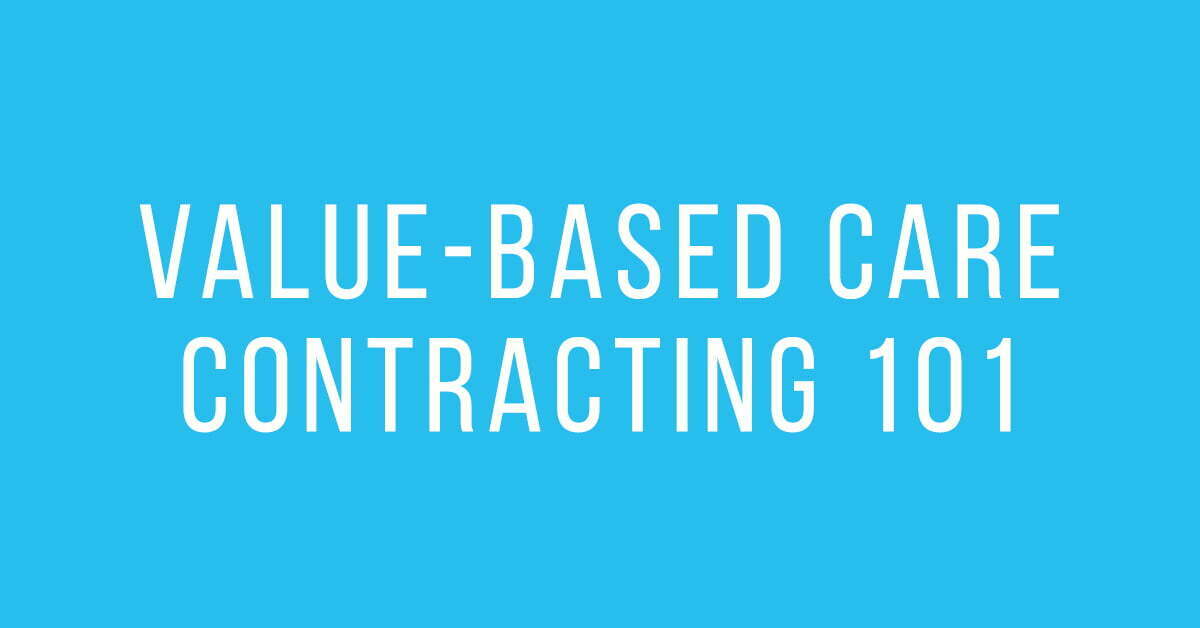Value-based care (VBC) contracting lays the financial foundation for every VBC program. Unlike fee-for-service models, these contracts reward providers for quality, outcomes, and cost savings, aligning economic incentives with patient care.
However, fee-for-service contracts continue to be a challenge for VBC. The pandemic led to a drastic volume reduction, which impacted FFS contract revenue ($15B loss due to volume dips).
During the pandemic, organizations with value-based contracts were able to pivot operations to maintain revenue even when the volumes dropped. VBC payments will increase rapidly in the near future as hospitals and physician practices look to protect themselves against future downturns.

How to succeed at value-based contracting
Revcycle Intelligence (of Xtelligent Healthcare Media) shared an in-depth article highlighting how to succeed at value-based contracting. We’ve summarized the most important takeaways below, organized into what to focus on before, during, and after contract negotiations.
Prior to engaging in contract negotiations:
-
- Don’t treat physician engagement as an afterthought. Dedicate meaningful clinical leadership—more than just a token 0.2 FTE—to rally providers around your VBC goals.
-
- Build a strong referral network that can be managed tightly with hospitals and specialists.
-
- Make a meaningful investment in changing FFS workflows to optimize patient care and care coordination. Tracking and accountability are key.
-
- Build strong financial models to estimate the cost of managing the patient population you might get. Include both medical and administrative costs, and test your assumptions.
Heading into contract negotiations:
-
- Promote your organization’s quality metrics. Do you have longer clinic hours compared to your neighboring groups? Do you have better STARS/HEDIS scores? Are you leading in patient satisfaction scores?
- Build an experienced team to handle payor contract negotiations. Every contract is unique, and the fine print matters. Most importantly, understand how your payor will attribute patients.
- Don’t overcommit to collecting and reporting data you can’t reliably deliver. Prepare your IT infrastructure well ahead of time.
- Make sure your payors will be good partners in promoting your group and helping you grow your patient base.
What to watch after the negotiation
-
- Growth is key because organizations need a panel of patients for contracts to work, and those patients cannot all be high-risk.
- Keep close tabs on provider satisfaction, physician growth, and employer satisfaction with the care delivered.
- Noticeable dips in quality performance may need a change and possibly another negotiation round. Identify shortfalls early and frequently communicate with your payor partners.
- Success begets success with payor contracts.
Final thoughts: VBC contracting isn’t just a financial exercise
VBC contracting is a strategic shift. Start with strong internal alignment, understand the data and dollars, and choose payor partners who see value the way you do. Success builds on itself, and a smart first contract can set the tone for sustainable growth.
How does value-based care differ from fee-for-service models?
Why is patient attribution important in value-based care negotiations?
How can providers avoid overcommitting on data collection and reporting?
To avoid overcommitting, providers should evaluate their current IT infrastructure and data capabilities before entering into VBC agreements. Only commit to metrics you can consistently track, validate, and report. Collaborate with clinical and administrative teams to assess what’s realistically achievable, and invest early in systems that support real-time data sharing and quality reporting. This prevents penalties and builds trust with payor partners.

